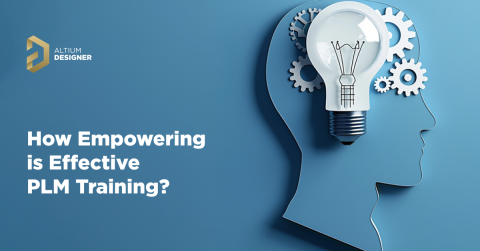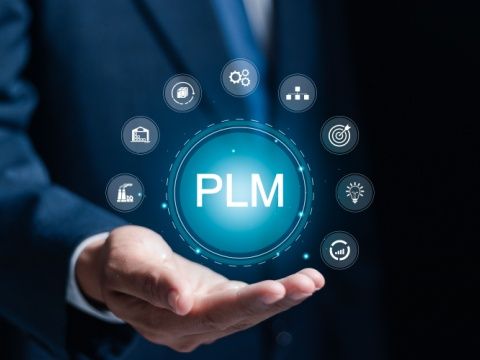PLM Improves Regulatory Compliance: Easier Tracking of Requirements and Standards

In PCB design and manufacturing, compliance with regulatory standards is not just a best practice; it’s a legal requirement. The standards set out by various regulatory bodies like the International Electrotechnical Commission (IEC) and the Institute of Electrical and Electronics Engineers (IEEE) push designers to create safe, reliable, and interoperable electronic products; this should safeguard consumers from potential risks and businesses from costly liabilities.
Regulatory requirements, which differ across industries and regions, can't be ignored. Companies need to stay on top of the evolving standards and integrate them into the design and manufacturing process, which requires teams that pay meticulous attention to detail and a robust compliance framework that outlines a straightforward organizational process for adoption and adherence. To deal with the variety of bodies and standards, from the United States FDA to the European Union’s RoHS directive, they must also understand industry-specific requirements and have a proactive approach to compliance management.
PLM Integration as a Regulatory Compliance Service
Compliance with industry standards and requirements is paramount, and product lifecycle management (PLM) solutions have proven themselves indispensable in this pursuit. They allow companies to integrate multiple parts of the development process onto a single, centralized platform, which helps streamline compliance processes and assist teams in meeting industry standards.
Meeting Industry Standards with PLM Tools:
- Data Standardization: PLM provides a central repository for product data, which assures consistency and accuracy through the lifecycle.
- Traceability: By tracking changes and updates, PLM enables compliance with traceability regulations.
- Version Control: PLM simplifies the maintenance of proper version control so that teams can only access approved versions of documents and designs.
- Documentation Automation: PLM can automate compliance documentation processes based on the information stored in the system, which reduces admin and minimizes the risk of errors.
- Audit Trails: The PLM system maintains a detailed record of activities, which is essential for demonstrating compliance during audits and inspections.
Streamlining Regulatory Compliance Processes with Integrated Solutions:
- Cross-functional Collaboration: With all processes being integrated into one platform, PLM integration helps distant silos to communicate efficiently and make decisions.
- Real-time Data Access: The decision-making process is expedited as relevant stakeholders can access compliance-related data in real-time.
- Workflow Automation: Cycle times are reduced when using PLM systems as they automate compliance workflows such as change control processes and document approvals.
- Risk Management: PLM systems give teams access to structured frameworks for identifying, assessing, and mitigating compliance risks throughout the product life cycle.
- Integration with Regulatory Databases: When integrated with regulatory databases, companies can use PLM systems to access up-to-date information on the compliance standards relevant to their processes.
The Role of Product Lifecycle Managers in Regulatory Compliance Services
As effective as technology is, it’s important to have a human influence on proceedings. Product Lifecycle Managers help companies align systems with compliance objectives to enforce consistent processes and standards across product development initiatives, reduce non-compliance risk, and enhance regulatory agility.
Working with a company’s cross-functional teams to make sure that PLM systems are configured to support compliance requirements, these managers define compliance workflows, configure data structures to capture regulatory attributes, and establish protocols for managing compliance-related changes.
Product lifecycle managers can use the following strategies for efficient regulatory tracking and implementation:
- Establish an accessible centralized repository for compliance data by creating a single source of truth within the PLM system that stores all compliance-related information.
- Implement an automated compliance checker that verifies compliance with regulatory requirements at every stage of the product life cycle to help enforce accuracy and consistency—lessening the need for human intervention.
- Maintain detailed audit trails through mechanisms that record all compliance-related activities in the PLM system. Companies that do this can track compliance efforts and provide relevant data during audits and inspections.
- Facilitate collaboration between silos such as design, engineering, and regulatory affairs so that each team can implement its compliance-related knowledge on the product at each stage of the development process and mitigate the risk of non-compliance later.
- Integrate a robust risk management process that integrates with compliance tracking to identify and minimize compliance risks from the foundational stage of projects.
Electronics Design Engineers: Regulatory Compliance at the Forefront
At a foundational level of PCB design, electronics design engineers ideate with compliance in mind. They can mitigate the risk of expensive redesigns in the later stages and expedite time-to-market by following design for manufacturability (DFM) guidelines, which help them to optimize PCB layouts for compliance with manufacturing constraints and industry standards, and using simulation tools, like Altium’s market offerings, to identify and rectify compliance issues early in the design cycle.
PLM solutions, which can be integrated with DFM, help engineers to make informed decisions and validate design decisions against up-to-date regulatory requirements and industry standards, conduct simulations to assess compliance performance, and document compliance-related information for regulatory submissions, streamlining workflows and enhancing design integrity.
Quality Assurance: A Pillar of Regulatory Compliance Services
Quality assurance (QA) teams can use PLM to continuously monitor product quality and compliance by establishing quality checkpoints throughout the product life cycle. To avoid later production line issues, they can detect and remedy deviations from regulatory requirements early and leverage PLM systems to define inspection criteria, capture inspection results, and generate compliance reports for internal audits and regulatory submissions, among other handy features. If integrated with quality management systems (QMS), they can use PLM to establish a closed-loop process for managing non-conformances and driving continuous improvement in compliance performance.
An additional boon for QA teams is PLMs provision of consistency and standardization across global operations. Irrespective of location, companies can trust that product quality will meet the regulatory requirements necessary, unlocking a standardized approach that lessens compliance risks associated with regional variations and gives companies more visibility and control over operations, plus the ability to establish common product structures and homogenize manufacturing processes, which tends to drive operational excellence.
Operations Management: Ensuring Compliant Production
Operations Managers play a pivotal role in manufacturing; they are the overseers and coordinators of production processes. Above all else, they make sure that activities adhere to prescribed standards and specifications. Through the integration of PLM with manufacturing execution systems (MES), companies can enforce compliance controls and traceability measures on the floor, allowing Operations Managers to use the system to define manufacturing routings and specific inspection requirements and track material certifications throughout the production process. Through this link, real-time production and compliance performance data across key metrics can be ascertained.
In this instance, PLM bridges design and production, facilitating the transfer of up-to-date compliance-related information and data and work instructions, including BOMs, assembly instructions, and quality standards, in real-time so that production teams can execute manufacturing processes in a regulatory-compliant manner as soon as possible. For an additional boost in capabilities, companies should consider integrating PLM with enterprise resource planning (ERP) systems for:
- synchronized production schedules.
- the management of inventory levels.
- ensured regulatory compliance across the entire supply chain.
Strategic Approaches for Decision-Makers
It can be tough for decision-makers to deal with the complexities of compliance. That said, it is essential to view this task as both a regulatory requirement and a strategic avenue that nurtures company-wide success. Consider adding the following thoughts to your decision-making process when contemplating how to approach compliance strategically:
Align Compliance with Business Objectives:
- Integrate compliance objectives seamlessly with broader business goals to guarantee that compliance efforts contribute directly to the company’s success and resilience in the marketplace.
Foster a Culture of Compliance:
- Embed both compliance and accountability into every aspect of the company. It will instill confidence in stakeholders and showcase a commitment to ethical business practices, which are important in a world where scrutiny can sink market share.
Strategic Resource Allocation:
- Allocate resources to compliance initiatives that yield the highest ROI but prioritize investments in technology and talent—human-tech augmentation is pivotal in achieving and maintaining compliance excellence.
Thorough Assessment of Impact:
- Commit yourself to thorough due diligence before you commit resources. It’s important to assess compliance initiatives’ financial and operational implications to ensure that investments are justified and resources are prioritized effectively.
Quantify the Cost of Non-Compliance:
- Consider the repercussions of non-compliance with regulatory standards. Not only will non-compliance damage your brand image and market share when found out, but falling foul of the European Union’s RoHS and REACH directives, for example, can lead to hefty fines and potential prison sentences for importers.
Cost-Benefit Analysis and Risk Assessments:
- Solid analysis of the entire company processes will unveil opportunities to optimize compliance processes, improve operational efficiency, and drive sustainable growth.
The Road Ahead for Regulatory Compliance Services in PCB Design
Currently, PLM is a critical enabler of compliance excellence for PCB design and manufacturing companies. It’s best described as an “All for one, one for all” solution. By integrating it into their processes, they can streamline compliance workflows, guarantee product quality, and protect themselves from regulatory risks.
The roadmap for regulatory management in the PCB industry is set for further disruption, with AI, digital twin, and cloud-based PLM solutions each maturing and potential geopolitical problems that might force changes when sourcing electronic components. But, for now, companies need to focus on PLM optimization, regulatory compliance, and maintaining their competitive edge in the global marketplace.
If you want to elevate your PCB design standards and unlock unparalleled efficiency and innovation, look at Altium Enterprise Solutions, where we bring digital transformation to life with a comprehensive, digitally integrated electronic design solution for enterprises.











